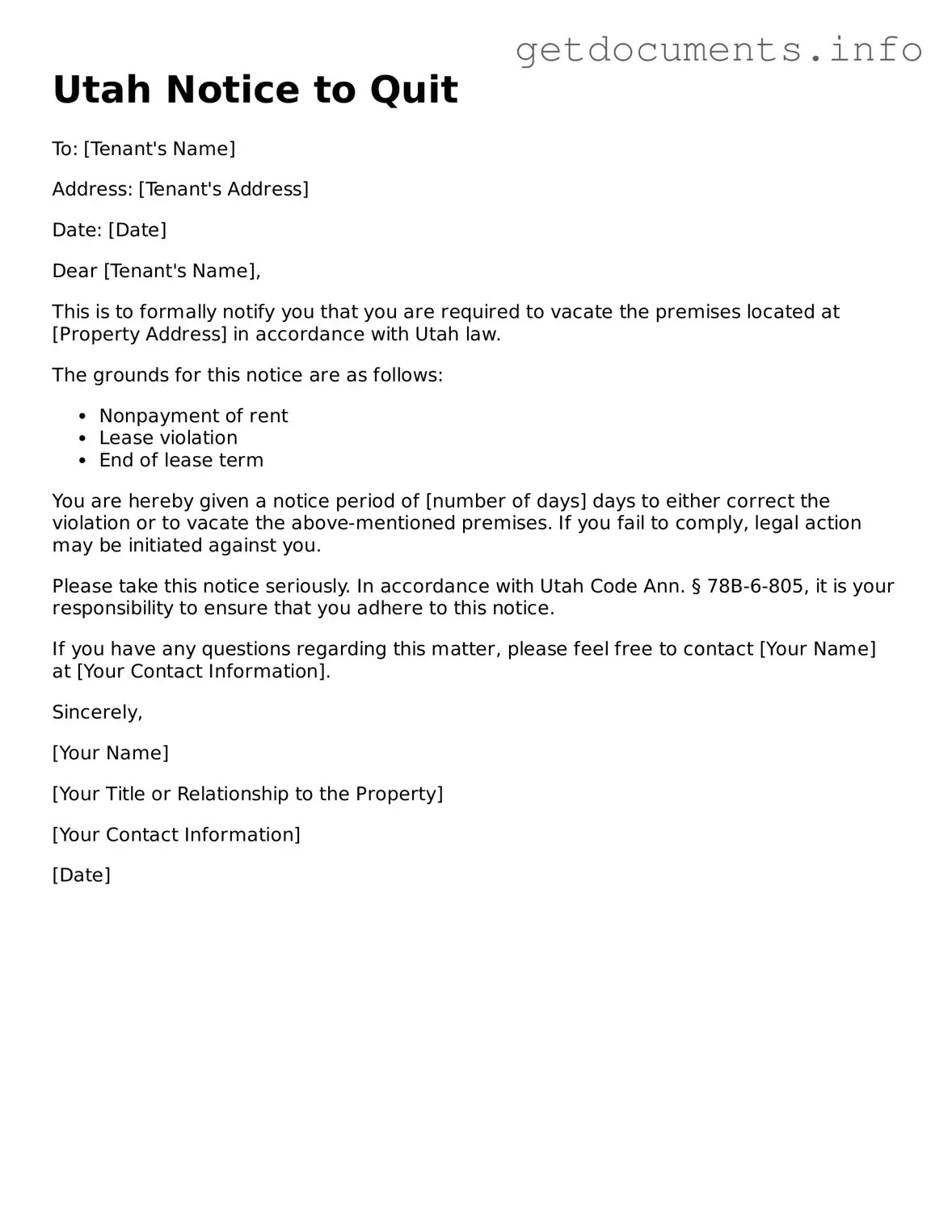Free Notice to Quit Template for Utah
The Utah Notice to Quit form is a legal document used by landlords to formally notify tenants of their need to vacate a rental property. This notice serves as an essential step in the eviction process, outlining the reasons for the request and providing a timeline for compliance. Understanding how to properly fill out and deliver this form is crucial for both landlords and tenants; start the process by clicking the button below.
Access Notice to Quit Editor
